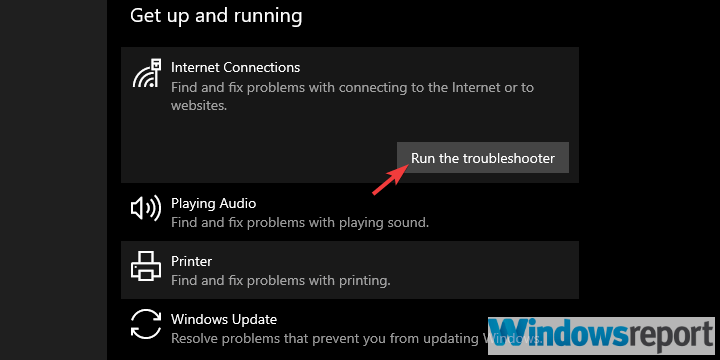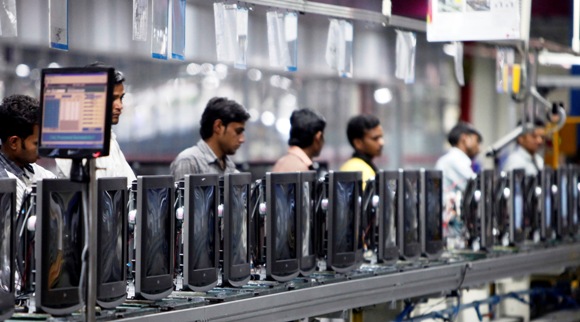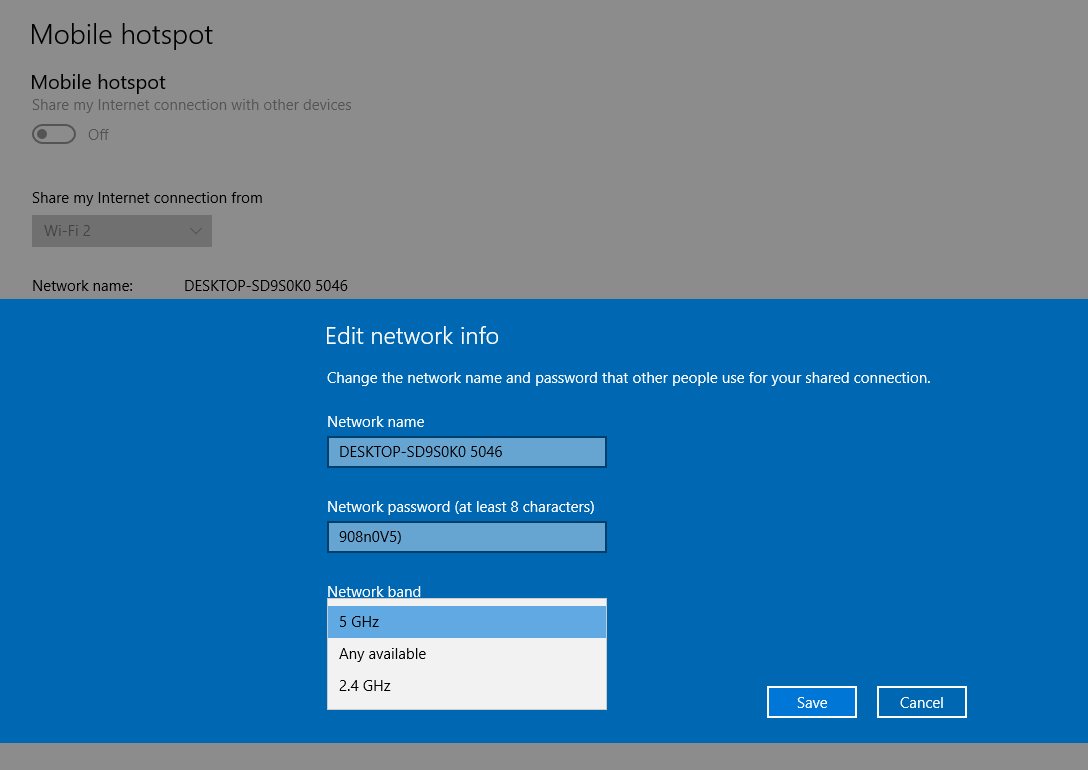- Hotspot Unable To Connect At This Time
- Verizon Hotspot Unable To Connect
- Hotspot Unable To Connect Verizon
- Hotspot Unable To Connect To Laptop
- Iphone Hotspot Unable To Connect
Here for instance, if you noticed up-to-date network driver updated by Driver Booster is unable to fix WIFI hotspot for laptop error, it is up to you to restore to the previous one by Driver Booster automatically. Download, install and run Driver Booster on Windows 10. In Driver Booster, click Scan. Then it will start scanning for your PC. In order for the Mobile HotSpot application to work, you will need to have the service feature '3g Mobile HotSpot'. If this service feature is not added to the account when you download the Mobile HotSpot application, it will be able to connect devices via WIFI to the Palm device, but no data will be able to be transferred.
Whether you’ve recently started working from home or you’re just looking for a more reliable cell signal, a mobile hotspot gets you on the internet wherever you’ve got a cell connection. The best part is that it doesn’t limit you to your cell phone’s tiny and frustrating screen. With a mobile hotspot, you can use your laptop or tablet to edit documents, draft important emails, and do whatever you need to do on a day-to-day basis without relying on a limited WiFi signal.
Unlike home or office Wi-Fi that only works in the immediate vicinity of routers and WiFi repeaters, understanding how to connect a mobile hotspot to a laptop gives you fast, workable internet wherever you may be, as long as you have a cell connection.
Why Won’t My Hotspot Connect to My Laptop?
But when you have a mobile hotspot connected and no internet, your work could crawl to a halt, as well as frustrate and divert your valuable attention to finicky troubleshooting. Unfortunately, while many hotspots have similar functionality and feature sets, the exact workings of each hotspot are different for each device, operating system, and carrier.

Troubleshooting a hotspot with no internet isn’t a one-size-fits-all approach, so you’ll likely have to spend some time on each device. That said, there are some commonalities between hotspots and carriers, and certain tricks will help you get your hotspot up and running whether you’re on Android, iOS, Windows, or MacOS.
Troubleshooting Your Mobile Hotspot Connection

Restart your hotspot and computer
- If you have a mobile hotspot connected but no internet, the first place you should check is the hotspot itself. Whether you have a standalone hotspot like the Verizon Jetpack, a Nighthawk LTE or a MiFi, or you’re trying to share your internet connection from your iOS or Android smartphone, start by resetting or rebooting your hotspot.
- Many issues can be resolved with a simple reboot and reset. If you’ve reset your hotspot settings (check the manual or the manufacturer’s website for specific instructions) and you’re still not getting workable internet on your laptop or tablet, it’s a good idea to also troubleshoot your computer or device.
- If your mobile hotspot has worked for you in the past, restarting your computer could solve the issue.
Hotspot Unable To Connect At This Time
Ensure that your service is active and in good standing
- If your hotspot device seems to be working properly and has an active connection, it could be an issue with your service. With a new account you may need to register or activate your hotspot service or subscription, so call your provider if a new device is functioning but not providing you with a workable connection.
- Depending on your specific device or network, you may also need to update your data profile or activate your hotspot with your provider.
- Generally, a hotspot plan is often an add-on to an existing cell phone or other group plan, so be sure you’ve turned on and activated all the relevant settings before moving forward.
On Windows, verify that your drivers are installed and working properly
- If you’re on a Windows computer, it could have nothing to do with your hotspot at all and could be an issue with your network adapter or drivers. Windows has a built-in troubleshooter that can do the heavy lifting for you.
- Just click Start, type “troubleshooting” and click “view all” until you see “network adapter.”
- Click it, and the process should walk you through the steps to get your device’s wireless connection working again.
- You might need to reinstall drivers or specialized software, so have an alternate internet connection ready to help you download what you need while you troubleshoot.
- If you have an alternate USB WiFi adapter, give that a shot. It could be that your built-in adapter is malfunctioning for some reason, and an alternate adapter will help you rule that out.

On Mac or iOS, check your settings depending on the type of connection
- If you’re using a Mac to connect to a mobile hotspot but you have no internet, it could be as simple as toggling the right setting.
- First, check if Personal Hotspot is turned on in Settings > Personal Hotspot. If it isn’t, toggle the setting and try again.
- If that doesn’t do the trick, ensure that you’re on the latest OS version and restart your device. It can also help to go to Settings > General > Reset to reset your network settings.
- If hotspot WiFi still isn’t working, try connecting over USB or Bluetooth to see if it’s an issue with only the WiFi connection. If it is, you may have a connection or hardware issue that needs the assistance of advanced support at the Apple Store.
On Android, verify that your hotspot is working correctly
- If you’re using a mobile hotspot from your Android phone, check your settings or your hotspot app to determine whether the hotspot is active. Some devices come with a built-in hotspot, but you’ll still have to activate the service with your carrier, so call your provider if everything else looks to be in order.
- As long as your phone has an internet connection, you should be able to share that connection with the right settings and features activated, though it’s important to note that on a standard plan you may not have hotspot functionality out of the box — you’ll likely have to upgrade your plan to share your phone’s internet connection with other devices.
Other Solutions to Your Connection Problem
Verify your WiFi password and other settings
If all else fails, try removing the connection from your devices and starting again from scratch. Sometimes the wrong information can be cached or the settings can become corrupted, leading to connection issues.
On your computer, head to your WiFi connection settings and delete the profile associated with your hotspot. A bad password or any other number of issues can prevent you from getting online, and sometimes setting up a new profile is an easier fix.
Verizon Hotspot Unable To Connect
Look into a hotspot signal booster/cell signal booster
If your connection is active but it’s actually your data that’s slow or prone to drops, you might need a signal booster. While you’re sure to have experienced reliable data speeds in the open air around your home or inside your car, a tell-tale signal issue is that once you step inside your connection slows to a crawl, and dropped calls become commonplace. In these instances, the problem isn’t your device, it’s your cell signal.
The overriding issue here is that most homes and vehicles tend to seek maximum energy efficiency when it comes to climate control and noise pollution, but the same energy-efficient glass and thick materials also make it more difficult to get a solid cell service connection.
If you’re in a slightly remote area, or just on the wrong side of a large building or hill from the nearest cell tower, your connection could be even worse and slow to a crawl just when you need it most. Simply put, a cell signal booster gives you a workable signal even in deep dead zones in your home or car.
How a Signal Booster Works
By boosting the signal you already get around your car or home, a cell phone signal booster relays the strong outside signal to your devices inside, whether it’s a phone, mobile hotspot or another cell-capable device.
It all starts with an outside antenna, which communicates with nearby cell towers and feeds the signal in. Once inside, a booster amplifies the cell signal received by the outside antenna and relays it to strategically placed indoor antennas in the troublesome spots more commonly known as dead zones. You likely already know the places — it’s where your calls most frequently drop and where data slows to a crawl.
With a signal booster, you’ll be able to fix your mobile hotspot connection problems once and for all, for all your devices and for any cell network. Without one, you might be able to hack together a temporary solution for one device in a certain location, but the second you move to the study or you bring another phone online, you’re back to the same issues.
A mobile hotspot protects you against these nagging problems, whether they exist in your home or car, and it even guards you against future network changes or surrounding developments that may negatively impact the signal you already rely on today.
Stay Connected with weBoost Cell Phone Boosters
Here at weBoost, we’re passionate about helping individuals, families, and groups stay connected in our always-on, always-connected world. We’re a leader in comprehensive solutions to fix cell connection issues inside any structure. Shop weBoost cell phone signal boosters to boost your mobile hotspot connection today so you don’t have to worry about disconnecting again.
Use these steps first
Try again after each step.
- Check that Personal Hotspot is turned on in Settings > Personal Hotspot. If you can't find or turn on Personal Hotspot, check that your wireless carrier enabled it and that your wireless plan supports it.
- Restart the iPhone or iPad that provides Personal Hotspot and the other device that needs to connect to Personal Hotspot.
- Make sure that you have the latest version of iOS.
- On the iPhone or iPad that provides Personal Hotspot, go to Settings > General > Reset, then tap Reset Network Settings.
If you still need help, use the steps below for help with Personal Hotspot over Wi-Fi, USB, or Bluetooth.
If you can't connect to Personal Hotspot with Wi-Fi
On the device that provides Personal Hotspot, go to Settings > Personal Hotspot, then follow these steps:
- Make sure that Allow Others to Join is on.
- Remember the device's Wi-Fi network name and password that appear on this screen. If you want to change the Wi-Fi network name, learn how to change your device name.
- If you're using an iPhone 12, iPhone 12 mini, iPhone 12 Pro, or iPhone 12 Pro Max, turn on Maximize Compatibility. Then try connecting your devices again to your Personal Hotspot.
- Stay on this screen until you connect your other device to the Wi-Fi network.
On the device that needs to connect to Personal Hotspot, follow these steps:
- Turn Wi-Fi off and back on.
- Make sure that you connect to the correct Wi-Fi network. The network name is the same as the iOS device that provides Personal Hotspot and might appear next to it.
- If you see a password error when you try to join Personal Hotspot, check the Wi-Fi password: On the device that provides Personal Hotspot, go to Settings > Personal Hotspot to see the Wi-Fi password.
If you can't connect to Personal Hotspot with USB
To avoid unnecessary data charges, turn off Personal Hotspot when you don't need it. If you don't, every time you plug your iOS device with Personal Hotspot into your computer to charge, your computer will connect to Personal Hotspot.
Follow the steps below for your Mac or Windows PC.
Connect your Mac to Personal Hotspot with USB
- Update to the latest version of iTunes.
- With a USB cable, connect your Mac to the iPhone or iPad that provides Personal Hotspot. If prompted, trust the device.
- Make sure that you can locate and view your iPhone or iPad in iTunes or the Finder. If your Mac doesn't recognize your device, try a different USB cable.
- Go to System Preferences > Network, then select iPhone USB. If you don’t see it, click and add it.
- Click , choose Make Service Inactive, then click Apply.
- Click , choose Make Service Active, then click Apply. If you already have a different network connection, your Personal Hotspot connection might not activate until you uncheck “Disable unless needed” and click Apply.
Connect your Windows PC to Personal Hotspot with USB
- Update to the latest version of iTunes.
- With a USB cable, connect your computer to the iPhone or iPad that provides Personal Hotspot. If prompted, trust the device.
- Make sure that you can locate and view your iPhone or iPad in iTunes. If your Windows PC doesn't recognize your device, try a different USB cable.
- Follow the steps provided by Microsoft to check your Internet connection in Windows 10 or Windows 7.
If you can't connect to Personal Hotspot with Bluetooth
Use the steps below to pair your devices and connect to Personal Hotspot with Bluetooth.
Hotspot Unable To Connect Verizon
Pair your devices

- On the device that provides Personal Hotspot, go to Settings > Personal Hotspot and make sure Allow Others to Join is on.
- Go to Settings > Bluetooth and make sure that Bluetooth is on.
- Keep this screen open, then follow the steps for the device that needs to connect:
- On your iPad or iPod touch, tap Settings > Bluetooth and make sure Bluetooth is on. Tap the device that provides Personal Hotspot, confirm the code that appears, then tap Pair on both devices.
- On your Mac, choose Apple () menu > System Preferences, then click Bluetooth and make sure Bluetooth is on. Select the device providing Personal Hotspot, click Connect, then follow the onscreen instructions.
- On your Windows PC, click the Bluetooth icon in the Notification area and make sure Bluetooth is on. Choose Add a Bluetooth Device, then follow the onscreen instructions.
Connect to Personal Hotspot with Bluetooth
Here's how to connect your Mac or PC:
- On your Mac, click in the menu bar. Choose your iOS device that provides Personal Hotspot, then choose Connect to Network. If you can't connect, skip to the next section.
- On your Windows PC, click in the Notification area and choose Join A Personal Area Network. Right-click your device and hover your pointer over 'Connect using,' then select 'Access point.' If you still can't connect, skip to the next section.
If you still can’t connect to Personal Hotspot with Bluetooth
On your devices, turn Bluetooth off and back on:
Hotspot Unable To Connect To Laptop
- On your iOS devices, go to Settings > Bluetooth and turn Bluetooth off and back on.
- On your Mac, click in the menu bar, then turn Bluetooth off and back on.
- On your PC, choose Settings, click , then turn Bluetooth off and back on.
If you still can't connect, follow these steps:
- Unpair your device:
- On the iPad or iPod touch that needs to connect to Personal Hotspot, tap Settings > Bluetooth. Tap next to the device that provides Personal Hotspot, then tap Forget this Device.
- On your Mac, choose Apple () menu > System Preferences, then click Bluetooth. Select the device that provides Personal Hotspot, then click .
- On your Windows PC, click in the Notification area. Select 'Show Bluetooth devices' and select the device that provides Personal Hotspot. Click Remove, then click OK.
- Restart all your devices.
- Pair your devices and try again to connect to Personal Hotspot.
Get more help
Iphone Hotspot Unable To Connect
If you still can’t connect, contact Apple Support to get help with your iPhone or iPad (Wi-Fi + Cellular).